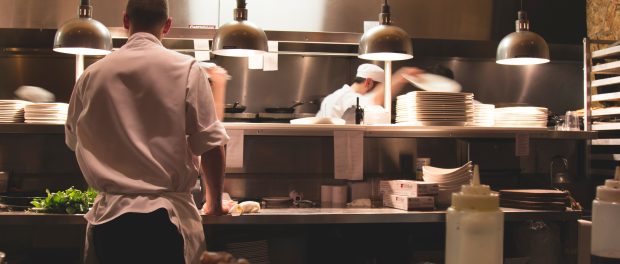Disruption is the biggest threat and the biggest opportunity for the food industry

The food industry is rife with disruption, and far from riding the wave of change, restaurateurs seem to be sinking under its weight. The category of casual dining is famously flailing with once-popular high-street chains like Byron Burger and Prezzo all closing doors across the country in the past 18 months. Faced with high rents, increased competition and belt-tightening patrons, restaurants are scrambling for customers through third-party delivery apps – only to lose control over customer experience and find their profit margins squeezed by exorbitant commissions.
The latest disruptor to enter the scene is the algorithm. We’ve seen Amazon participate in Deliveroo’s series G funding round, and now Google is claiming its own stake through the introduction of the “Order Online” to search listings. You don’t need to look far to find the interest for tech companies – data – and the rising importance of this commodity is set to completely redefine the industry. For instance, we’re already seeing the rise of data-fueled “dark kitchens” in cities like London and Paris, inspired by similar setups in the US and China. Touted as the WeWork of food, these delivery-only kitchens are designed to “optimise” the preparation and delivery of food.
It would be easy to predict downfall for restaurateurs in the face of such developments. However, the disruption that’s currently seizing the industry is just as much an opportunity as it is a threat. The issue is, so far the food industry has sat back and let tech companies take control of these advancements. The challenge for restaurateurs is to leverage these for themselves, rather than watching the tech companies take the lion’s share.
Food may have been late to digitise, but it’s not too late. I can see several areas where food companies could embrace data and technology to improve their customer experience and win back business. Dynamic ordering and delivery is just one measure that could put restaurateurs on the front foot. Just look at what happened to Five Guys in Lakeside when a University Sport society playing on nearby field decided to order 400 burgers and fries on a Saturday afternoon. Of course, the move sent the busy restaurant into chaos. Had the business operated on a dynamic ordering system – that is, a system capable of managing demand in line with resources – the app would not have processed the order in the first place. Even better, it could have suggested an alternative time – or staggered schedule – for the order.
The same goes for delivery. Everyone has had the experience of ordering a nice meal in the comfort of their own home, only to receive cold, wilting chips. Forward-thinking companies like Burger King are designing menus specifically for delivery customers, partially cooking chips then sealing them in a box at precisely the right time to continue cooking en route, ensuring their optimum freshness on delivery.
Another huge opportunity for restaurants is that of predictive analysis. Take sunny weather in London at the moment, for instance. If restaurants were more active in collecting data, an ice-creamery – for example – could learn that an influx of target customers would be watching Wimbledon at a big screen just down the road. They could then reach out to these customers through targeted advertising on social media and offer them two for one ice creams on their way home following the match.
Perhaps the most exciting opportunity for the food industry is the possibility of personalisation. Imagine walking into a restaurant and being handed an e-paper menu. Detecting your identity using facial recognition and retrieving your customer profile, the menu could deliver a range of options based on your preferences and dietary requirements. Such a menu could even plug into the health plan prescribed by your doctor, suggesting a meal that complies with your remaining calories for that particular day. But why stop there? Restaurants could even tap into third party data, taking into account factors such as festivals and celebrations – offering grilled fish on Good Friday, or a rainbow salad during Pride Week.
If the food industry could put themselves in a position to harness these opportunities, imagine how many more customers they could bring into their doors, and how great an experience they would be able to provide them with. No longer slaves to third-party delivery apps, restaurants could know when it makes sense to outsource this capability and when it doesn’t. Many might even discover they can handle deliveries better themselves in-house, keeping better track on customer service in the process.
The food space is gripped with change, and the critics would tell you that digitisation is the biggest threat that the industry has faced so far. But this couldn’t be further from the truth. Opportunities abound for restaurateurs to put themselves back in the driver’s seat and embrace the developments that are reshaping their industry.
By Tim Brown, VP of Product Strategy at Oracle Food and Beverage.


Leave a comment